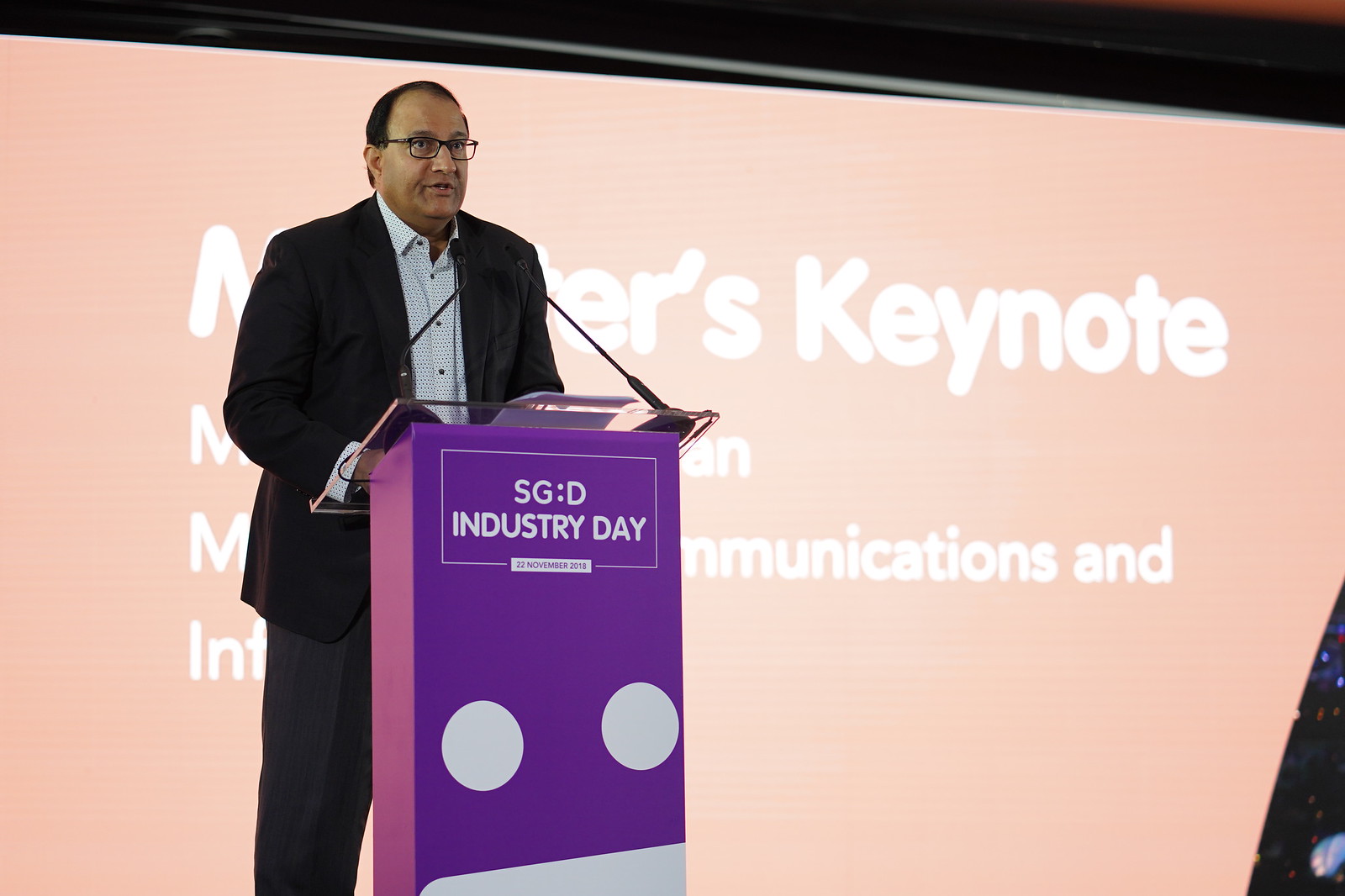The future of services is one that is end-to-end, frictionless, empathic and anticipatory to customer needs.
At Info-communications Media Development Authority (IMDA)’s second SG:Digital Industry Day, a series of initiatives was announced, aiming at helping the infocomm media (ICM) sector capture opportunities in the digital economy.
Minister for Communications and Information, Mr S Iswaran, was the Guest of Honour at the event which attracted the attendance of more than 1,500 ICM industry professionals.
Through the Services and Digital Economy Technology Roadmap (SDE TRM), Services 4.0 was identified as a potential engine of growth.
“Much has been said about Industry 4.0 and its transformative impact on the manufacturing sector. But the services sector too is undergoing a similar transformation,” said Minster Iswaran.
Service providers have evolved from providing manual services, or Services 1.0, to efficient services enabled by automation and the internet (Services 2.0). They have then moved on to more productive self-service models enabled by mobile, wireless and cloud technologies (Services 3.0).
Moving forward, “the next generation of service providers must be able to anticipate and empathise with the customer, take proactive, automated actions to enable their customers to seamlessly fulfil their needs in one platform,” the Minister explained.
In essence, the Services 4.0 vision is one that puts people at the centre – enabling workers to have more fulfilling work, businesses to capture opportunities and customers to enjoy enhanced experiences.
Using the banking sector as an example, Minister Iswaran said, “Not too long ago, customers had to physically go to a bank branch for simple transactions like making withdrawals and applying for a credit card.”
“ATMs and other technologies automated the delivery of such services. With the advent of the internet and later smart phones, banks were able to offer their services through websites and mobile applications.”
And now, today, “banks are going further to anticipate the services that their customers require through artificial intelligence.”
The key to realising this vision is the ‘Cloud Native Architecture’. It refers to a stack or infrastructure on cloud that includes a collection of technologies or services, all of which are plug-and-play and based on the best tool for each job.
The heart of evolving ICM systems, Cloud Native Architecture would provide easier access to emerging technologies to make them more cost-effective and scalable for companies. It also helps businesses meet customers’ demands in an agile manner.



